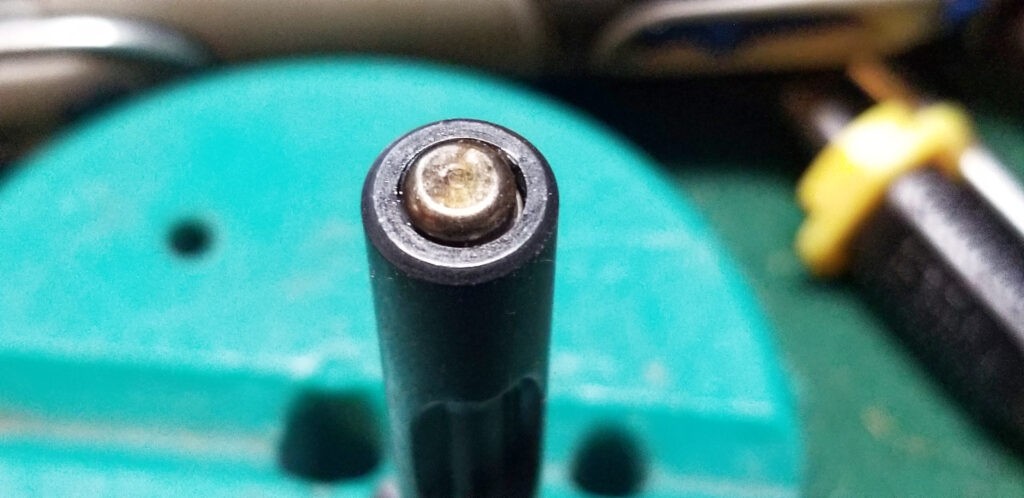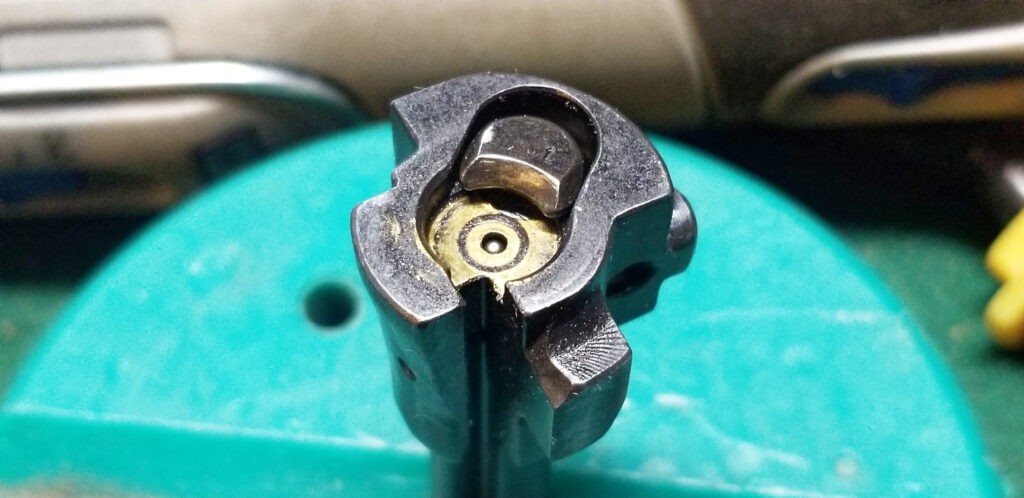Let me open with this comment:
ALWAYS Function Test Before You Go To The Range With a New or Modified Galil or AK Rifle or Pistol!!
Seriously – don’t wait to go to the range to do this. You can find out a lot of things at home with all your tools and supplies on hand vs. being somewhere wishing you were home.
Before function testing, I clean and lube the rifle. I like to use Super Lube grease during break in on all sliding surfaces and a few drops of Super Lube liquid lubricant on anything that rotates.
Use whatever your favorite bore cleaner is to clean out the barrel and the chamber. You will be surprised to see all of the dirt / dust / junk that comes out of a new barrel. Just because a given weapon is “new” does not mean it is clean.
Function Testing
First, I just test the mechanism without mags or dummy rounds. You can find out a lot by doing this and I do it without the dust cover on so I can see what is going on:
- Pull the bolt bolt carrier back and let it go. It should slam home without binding or sticking. If it does, try cycling the action 10-20 times and see if it smooths out. Some guys will cycle their AK a couple of hundred times before the range to smooth things out. I tend to find they are okay after a few dozen cyclings with lubrication or I need to take it apart and fix something such as a burr or rough surface.
- Pull the trigger, you should see it be released and it should firmly whack the firing pin. If it seems lame, the spring may be worn out or broken. I would recommend converting over to an ALG fire control group (PSA sells a custom version of the ALG-EKT that will work fine in any Galil or AK rifle – they are in stock and at a great price) and replace both the hammer and disconnector springs (the ALG will come with the disconnector spring but not the main hammer spring. ALG sells them and that’s what I use but I prefer the double wound spring model vs. the single spring unit they also sell. The Russians went with a double or “spiral wound” spring to increase the fault tolerance risk of a single spring breaking).
- Something unique to Galils is that they have a spring loaded firing pin whereas regular AKs just have a floating firing pin in the bolt body. You can get into arguments about this one. AKs work fine without a spring but you do have a risk of a pin sticking out or slamming home with enough force to cause a sensitive primer to detonate and cause a misfire. Thus some like putting a spring in the bolt that forces the firing pin backwards to reduce the odds of a misfire. Others will argue there is more risk of debris causing the spring to jam or the spring itself breaking and jamming the pin. Folks, this is like arguing Chevy vs. Ford – you aren’t going to convince a staunch believer of one side or the other that you are right and he is wrong. The Galil is not the only firearm design to do this and they work just fine. At any rate, just make sure the pin does not stay stuck out on a Galil. You should be able to push the exposed firing pin at the back of the bolt and both see and feel it freely move.
- Next, cycle the bolt carrier to cock the hammer, engage the safety lever next to block the trigger and try to squeeze the trigger – you should not be able to pull the trigger and have it fire. If you can then you will need to adjust the gap between the trigger and safety bar. With the ALG, this means you trimmed off too much, need to remove the first roll pin and start over with the second. If you don’t have an ALG, you will need to decide if you want to weld on some material onto the trigger leg or safety bar and then trim to fit.
- This next one tests the disconnector – with the trigger pulled back, cycle the action and you should see the hammer get caught/captured by the disconnector. When you let go of the trigger, the hammer should switch from the disconnector to the front hammer hooks on the trigger. This is a fascinating display of geometry. Now, if the disconnector does not catch the hammer or release it, you may need a new disconnector spring or have forgotten to install the spring.
Photos of the Bolt


Next, do the above with magazines and with dummy rounds – not live rounds. I use A-Zoom brand dummy rounds, just FYI and I also was using my surplus steel Galil mags at this point because my 922r parts count was being met thanks to the new fire control group.
Comments about the above:
- When it comes to step one above, I want to see the dummy round get stripped from the magazine and be fed up into the chamber nice and smooth. I will do this 10-20x to make sure it looks good. Things that can mess this up are: magazine not seating fully, bent magazine feed lips, no bullet guide installed, needing a slight radius at the start of the chamber to help line up cartridges, or if you bent the receiver while building or using the rifle (I’ve done both over the years so it happens.
- When I am cycling the rifle, does it stall/slow down at any point during the feeding of the ammo? Guess what? The Gallant failed this – the old surplus spring was too weak and I replaced it with an ALG spring – (Any AKM spring will work even though the Galil is 5.56 NATO and the AKMs are 7.6×39).
I then Install the dust cover and make sure that nothing is binding. At this point, your rifle should be good for testing at the range. Always, always, always test combinations of ammo and magazines on a given weapon before you rely on them. Do the function testing and take them to the range.
I hope this helps you out.
Note, I have to buy all of my parts – nothing here was paid for by sponsors, etc. I do make a small amount if you click on an ad and buy something but that is it. You’re getting my real opinion on stuff.
If you find this post useful, please share the link on Facebook, with your friends, etc. Your support is much appreciated and if you have any feedback, please email me at in**@*********ps.com. Please note that for links to other websites, we are only paid if there is an affiliate program such as Avantlink, Impact, Amazon and eBay and only if you purchase something. If you’d like to directly contribute towards our continued reporting, please visit our funding page.
